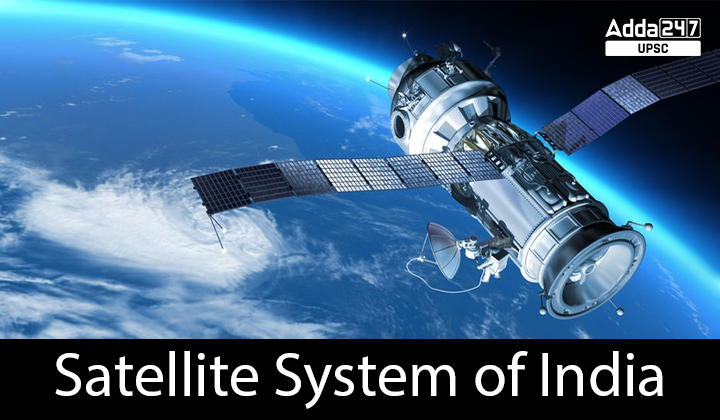Table of Contents
What is Satellite System?
A satellite system is a set of satellites that are in orbit around a planet or other celestial body. Satellite systems can be natural, such as the moons of Jupiter, or artificial, such as the International Space Station. Artificial satellite systems are used for a variety of purposes, including:
- Telecommunications: Satellites can be used to transmit data, voice, and video signals around the world. This is used for a variety of purposes, such as television broadcasting, internet access, and mobile phone communication.
- Navigation: Satellites can be used to provide navigation signals to GPS receivers. This is used for a variety of purposes, such as finding your way around a city, tracking the movement of ships and airplanes, and surveying land.
- Weather forecasting: Satellites can be used to monitor weather patterns and conditions. This information is used to forecast the weather and to track the movement of storms.
- Earth observation: Satellites can be used to observe the Earth’s surface and atmosphere. This information is used for a variety of purposes, such as monitoring the environment, tracking the movement of glaciers, and studying the effects of climate change.
- Military: Satellites can be used for a variety of military purposes, such as surveillance, communication, and navigation.
The type of satellite system used for a particular purpose depends on a number of factors, such as the required bandwidth, the coverage area, and the cost.
Satellite System of India
India has made remarkable advancements in its satellite system of India, spearheaded by the Indian Space Research Organisation (ISRO). This comprehensive system consists of several components and initiatives that aim to enhance communication, remote sensing, meteorology, and scientific research. The Indian National Satellite (INSAT) series forms a crucial part of this system, facilitating telecommunications, broadcasting, weather monitoring, and disaster management. By bridging the digital divide and connecting remote areas, the INSAT system has significantly contributed to India’s communication infrastructure.
Additionally, India’s satellite system includes the Remote Sensing Satellite (IRS) series, which captures high-resolution images of the Earth’s surface for applications in agriculture, land-use planning, environmental monitoring, and resource mapping. The Indian Regional Navigation Satellite System (IRNSS), known as NavIC, provides precise positioning and navigation services, supporting various location-based applications and disaster management. ISRO’s scientific research missions, such as Chandrayaan and Mars Orbiter Mission (MOM), have further demonstrated India’s space exploration capabilities and expanded our understanding of celestial bodies.
Through collaborative efforts with international partners, ISRO has strengthened India’s satellite system by engaging in joint satellite launches and data sharing. This collaborative approach has fostered global cooperation in space exploration and technology. India’s satellite system continues to play a pivotal role in advancing various sectors, improving quality of life, and contributing to scientific knowledge. With ISRO at the forefront, India is poised to further harness the potential of satellite technology for the benefit of its citizens and the world at large.
List of Indian Satellite
India has successfully launched and operated a diverse range of satellites, each serving a specific purpose and contributing to the country’s space exploration and communication capabilities. Here are some notable satellites from India:
- INSAT (Indian National Satellite System): INSAT is a series of geostationary satellites that provide vital services in telecommunications, broadcasting, weather monitoring, and disaster management. INSAT satellites have played a crucial role in connecting remote areas, enabling television and radio broadcasting, and supporting various communication needs.
- IRS (Indian Remote Sensing Satellites): The IRS series consists of satellites designed for remote sensing applications. These satellites capture high-resolution imagery of the Earth’s surface, aiding in agriculture, land-use planning, environmental monitoring, disaster management, and resource mapping.
- NavIC (Navigation with Indian Constellation): NavIC is India’s indigenous regional navigation satellite system, similar to the Global Positioning System (GPS). It provides precise positioning and navigation services over the Indian subcontinent and surrounding regions. NavIC aids in navigation, vehicle tracking, disaster management, and other location-based applications.
- Chandrayaan: Chandrayaan-1 and Chandrayaan-2 are India’s lunar exploration missions. Chandrayaan-1, launched in 2008, orbited the Moon and conducted scientific experiments. Chandrayaan-2, launched in 2019, comprised an orbiter, lander, and rover, with the objective of landing on the lunar surface. Although the lander did not successfully land, the mission provided valuable data and insights.
- Mars Orbiter Mission (MOM): Also known as Mangalyaan, MOM is India’s first interplanetary mission. Launched in 2013, it successfully placed the Mars Orbiter spacecraft into Martian orbit, making India the first country to achieve a successful Mars mission on its maiden attempt.
- GSAT (Geosynchronous Satellite): The GSAT series of communication satellites serve diverse purposes, including telecommunications, broadcasting, and Internet connectivity. These satellites contribute to expanding India’s communication infrastructure and meeting the growing demand for connectivity.
- RISAT (Radar Imaging Satellite): RISAT satellites are equipped with synthetic aperture radar (SAR) for all-weather imaging capabilities. They enable applications in agriculture, forestry, disaster management, and surveillance, as SAR can penetrate clouds and provide high-resolution images.
- Cartosat: The Cartosat series of satellites are primarily Earth observation satellites, equipped with high-resolution cameras. They contribute to mapping, urban planning, infrastructure development, and monitoring of natural resources.
These are just a few examples of the satellites developed and operated by India. The country’s satellite program continues to evolve, with ISRO working on new missions and technologies to further enhance India’s capabilities in space exploration, communication, remote sensing, and scientific research.
| Follow US | |
| UPSC Govt. Jobs UPSC Current Affairs UPSC Judiciary PCS Download Adda 247 App here to get the latest updates |


 TSPSC Group 1 Question Paper 2024, Downl...
TSPSC Group 1 Question Paper 2024, Downl...
 TSPSC Group 1 Answer key 2024 Out, Downl...
TSPSC Group 1 Answer key 2024 Out, Downl...
 Cabinet Ministers of India 2024, New Cab...
Cabinet Ministers of India 2024, New Cab...







